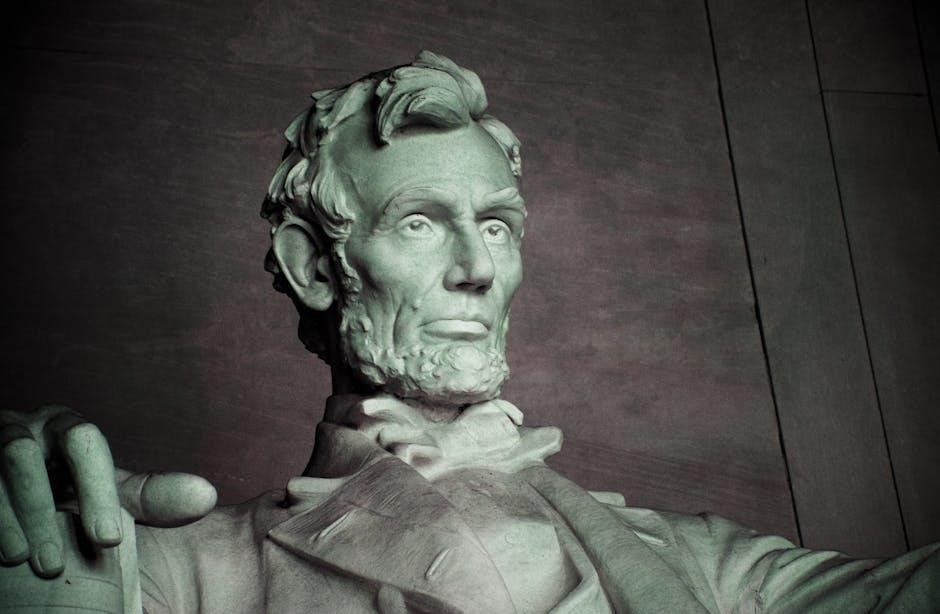Whats Wrong with the World⁚ Chesterton PDF ー An Overview
Chesterton’s “What’s Wrong with the World” analyzes modern humanity’s obsession with political idealism. He offers an incisive, witty analysis of social and moral issues. The text explores societal progress overshadowing fundamental human needs.
Chesterton’s Analysis of Modern Humanity’s Predicament
Chesterton’s analysis opens with the modern human predicament⁚ an over-obsession with political idealism. He identifies a mistake we continue to make, drawing from medicine to seek a cure wherever we look. His incisive wit examines social and moral issues, noting how societal progress and intellectualism overshadow fundamental human needs.
He pinpoints that people often erroneously think they know what is wrong. Chesterton argues that this is misguided and harmful. The modern individual prioritizes complex systems over basic human values. The core issue is a failure to first define what is right.
This loss of ideals makes true reform a difficult task. Instead of addressing root causes, society chases fleeting solutions. Chesterton urges a return to foundational principles, emphasizing the importance of establishing a moral compass before navigating societal challenges.
The Role of Ideals in Chesterton’s Worldview
In Chesterton’s worldview, ideals are paramount; their loss makes reform difficult. The book emphasizes defining “right” before “wrong,” highlighting that societal progress often overshadows fundamental human needs. Chesterton critiques misguided social and political trends, arguing that a failure to uphold ideals leads to societal decay.
He points out that people often erroneously think they know what is wrong, emphasizing the importance of a moral compass. Christian freedom, in Chesterton’s view, is the liberty to do what is morally right, and the Christian meaning of equality is central to his ideals.
The battle between good and evil plays a significant role, shaping his perspective. He uses the workingman’s plight as an example to illustrate how societal trends neglect basic human needs. Ultimately, Chesterton advocates for a return to fundamental ideals as a basis for meaningful change.

Identifying the Root Problem
The main problem is that we do not ask what is right; Chesterton emphasizes defining “right” before “wrong.” He critiques the modern approach of seeking cures without understanding fundamental principles.
The Importance of Defining “Right” Before “Wrong”
Chesterton posits that the fundamental error lies in addressing “what is wrong” without first establishing “what is right.” This is a central theme in “What’s Wrong with the World.” He argues that society rushes to identify problems and implement solutions without a clear understanding of the ideal state they are striving to achieve.
He critiques the modern tendency to diagnose and treat societal ills as if they were medical conditions, searching for cures without a proper diagnosis rooted in solid moral and philosophical principles. This approach, according to Chesterton, leads to misguided reforms and ineffective solutions. The focus should be on defining the ideal, the “right,” to provide a compass for navigating societal challenges.
Without a clear vision of what constitutes a just and virtuous society, efforts to correct perceived wrongs become arbitrary and often counterproductive. Chesterton advocates for a return to fundamental values and principles as the foundation for meaningful and lasting reform.
The Loss of Ideals as a Hindrance to Reform
Chesterton identifies the loss of ideals as a significant obstacle to genuine societal reform. In “What’s Wrong with the World,” he argues that a society without shared ideals lacks a common vision for the future, making it difficult to agree on the direction of change. Without a clear understanding of what constitutes a good and just society, reform efforts become fragmented and often contradictory.
The erosion of ideals leads to a situation where individuals and groups pursue their own narrow interests, resulting in social fragmentation and a lack of collective purpose. Chesterton believed that a return to shared values and principles was essential for overcoming this problem.
He advocated for a renewed emphasis on traditional virtues and a recognition of the importance of moral and spiritual foundations. Only by restoring a sense of common purpose can society hope to address its problems effectively and achieve meaningful progress. The absence of ideals makes reform a difficult and often futile endeavor.
Chesterton’s Critique of Societal Trends
Chesterton critiques social and political trends, deeming them misguided and harmful. He analyzes societal progress overshadowing fundamental human needs. He points out erroneous perceptions. His analysis is incisive, witty, and tackles social and moral issues of his time.
Misguided Social and Political Trends
In “What’s Wrong with the World,” Chesterton criticizes many social and political trends, arguing they are misguided and harmful. His incisive analysis targets the era’s obsession with political idealism, where societal progress overshadows fundamental needs. Chesterton highlights erroneous perceptions, pointing out that people often misidentify the root problems plaguing society.
He argues that a key issue is the failure to first define “right” before addressing “wrong,” leading to ineffective reforms. The loss of ideals further hinders progress. Chesterton’s critique extends to the workingman’s plight, illustrating how poverty and societal pressures impact families. The book offers a witty and thought-provoking examination of the social and moral issues of Chesterton’s time, prompting readers to reconsider their own understanding of societal ills and the path to meaningful change. He questions the very foundations of contemporary thought.
The Overshadowing of Fundamental Human Needs
Chesterton’s analysis in “What’s Wrong with the World” delves into how societal progress and intellectualism have come to overshadow fundamental human needs. He argues that the pursuit of abstract ideals and political visions has distracted from the more basic requirements of human flourishing. This overshadowing leads to a neglect of essential aspects of life, affecting individuals and families.
The workingman’s plight, where poverty leads to neglected care and societal vulnerabilities, serves as a stark example. Chesterton suggests that misguided social and political trends contribute to this problem, diverting resources and attention from addressing these core needs. By highlighting this oversight, Chesterton urges a reevaluation of priorities, advocating for a society that prioritizes the well-being and basic necessities of its people over abstract ideological pursuits. He emphasizes a return to simpler, more human-centered values.
Christian Perspective and Morality
Christian freedom, according to Chesterton, is the liberty to do what is morally right. This involves character, knowledge, and the freedom to choose rightly, aligning with Christian values.
Christian Freedom as the Liberty to Do What is Morally Right
Chesterton posits that Christian freedom isn’t merely the absence of constraints, but the positive ability to act in accordance with moral truth. It’s the liberty, knowledge, and developed character required to choose and enact what is morally right. This perspective emphasizes that true freedom isn’t simply doing what one wants, but wanting what one ought to do.
Christian freedom, therefore, is intrinsically linked to moral responsibility. It requires an understanding of right and wrong, coupled with the willpower to consistently choose the good. This contrasts with a purely secular view of freedom, which often prioritizes individual autonomy above moral considerations. Chesterton suggests that without a moral compass, freedom can easily devolve into license, leading to societal decay and individual unhappiness.
Ultimately, Christian freedom empowers individuals to live virtuously, contributing to a more just and compassionate society. It is not a passive state, but an active pursuit of moral excellence, guided by faith and reason.
The Christian Meaning of Equality
Chesterton explores the Christian concept of equality, differentiating it from purely secular interpretations. He argues that Christian equality doesn’t necessitate identical outcomes or abilities, but rather a fundamental recognition of the inherent dignity and worth of every individual as a child of God. This spiritual equality transcends social status, economic standing, or intellectual capacity.
The Christian perspective emphasizes that all humans are created in God’s image, possessing an intrinsic value that cannot be diminished by external factors. This belief fosters a sense of solidarity and mutual respect, encouraging compassion and empathy towards all members of society. It challenges systems that perpetuate injustice and inequality, advocating for the fair treatment and equal opportunities for everyone.
Furthermore, Christian equality acknowledges that while individuals may have different gifts and talents, each person has a unique contribution to make to the world. It celebrates diversity while affirming the shared humanity that binds us together, promoting a society where all individuals can flourish.

The Influence of Good and Evil
Chesterton posits that the world’s problems stem from the ongoing battle between God and the devil. He suggests the presence of both good and evil profoundly shapes human experiences and societal direction.
The Battle Between God and the Devil in the World
In “What’s Wrong with the World,” Chesterton suggests that the presence of evil is not merely an abstract concept, but a tangible force actively contending against the good in the world, embodied by God. He implies that many societal ills arise from this conflict, as the devil seeks to corrupt and distort the divine order;
This perspective casts human actions and societal trends as reflections of this cosmic struggle. Choices made by individuals and the direction taken by societies are influenced by this ongoing battle between good and evil. Understanding this conflict is crucial for diagnosing and addressing the underlying causes of societal problems.
Chesterton’s view emphasizes the importance of recognizing the spiritual dimension in worldly affairs. He urges readers to acknowledge the influence of both God and the devil in shaping the course of human events. By doing so, individuals can better discern between right and wrong, and contribute to the triumph of good over evil in their own lives and in the world around them.

Erroneous Perceptions of What is Wrong
Chesterton highlights that a significant part of the problem lies in people’s mistaken understanding of what truly constitutes a wrong. He points out that often, individuals and societies focus on superficial symptoms rather than addressing the root causes of their issues. This misdiagnosis leads to ineffective solutions and a perpetuation of the problems they seek to solve.
He argues that many perceived wrongs are, in fact, the result of deeper, more fundamental flaws in societal values and priorities. By failing to identify and address these underlying issues, reformers and policymakers often end up treating the symptoms while neglecting the disease. This approach is not only futile but can also exacerbate the problem in the long run.
Chesterton emphasizes the importance of critical thinking and a willingness to challenge conventional wisdom. He encourages readers to question their own assumptions and to look beyond the surface in order to identify the true sources of societal ills. Only by accurately diagnosing the problem can we hope to find effective and lasting solutions.

The Workingman’s Plight as an Example
Chesterton uses the plight of the workingman as a poignant example of societal ills. He illustrates how poverty forces neglect upon the workingman’s family, specifically mentioning how the little girl’s hair suffers, first due to financial hardship, then potentially exposed to promiscuity, and ultimately, perhaps erased by societal changes.
This image serves as a microcosm of the broader issues he addresses. The workingman’s struggles are not merely economic but also moral and spiritual. He is caught in a system that devalues his humanity and reduces him to a mere cog in the machine. The neglect of his daughter’s hair symbolizes the erosion of traditional values and the dehumanizing effects of industrial society.
Chesterton argues that the workingman’s plight is a direct result of misplaced priorities and a failure to recognize fundamental human needs. He calls for a reevaluation of societal values and a greater emphasis on the dignity of labor and the importance of family life. By addressing the root causes of the workingman’s struggles, society can create a more just and equitable world for all.



